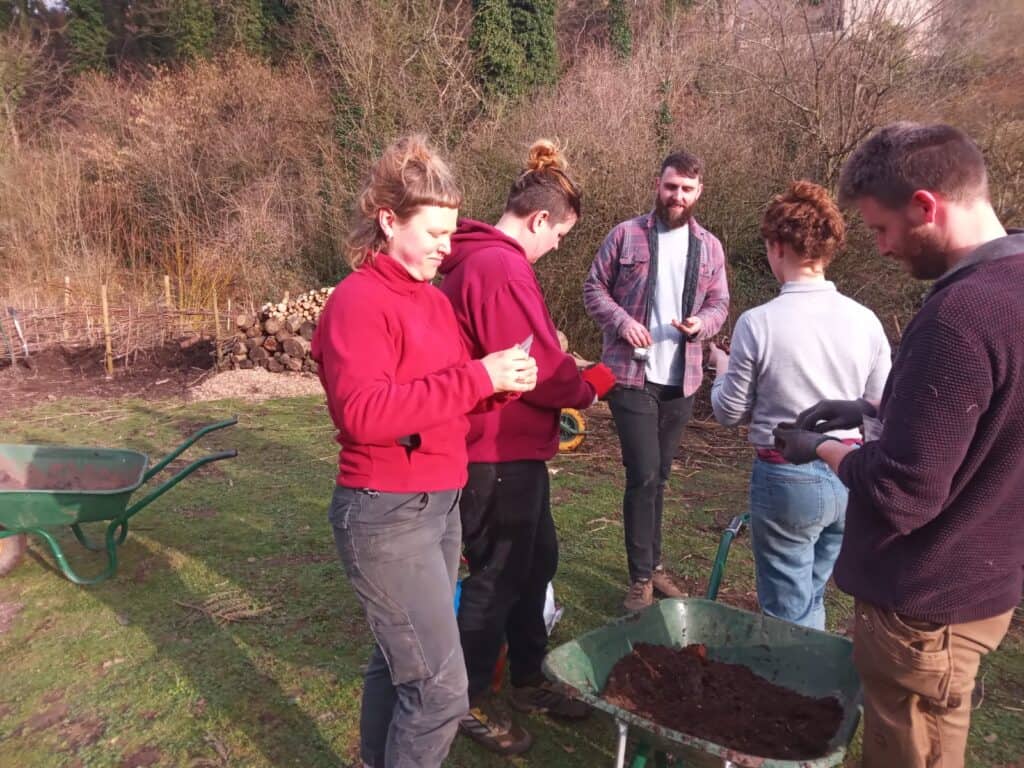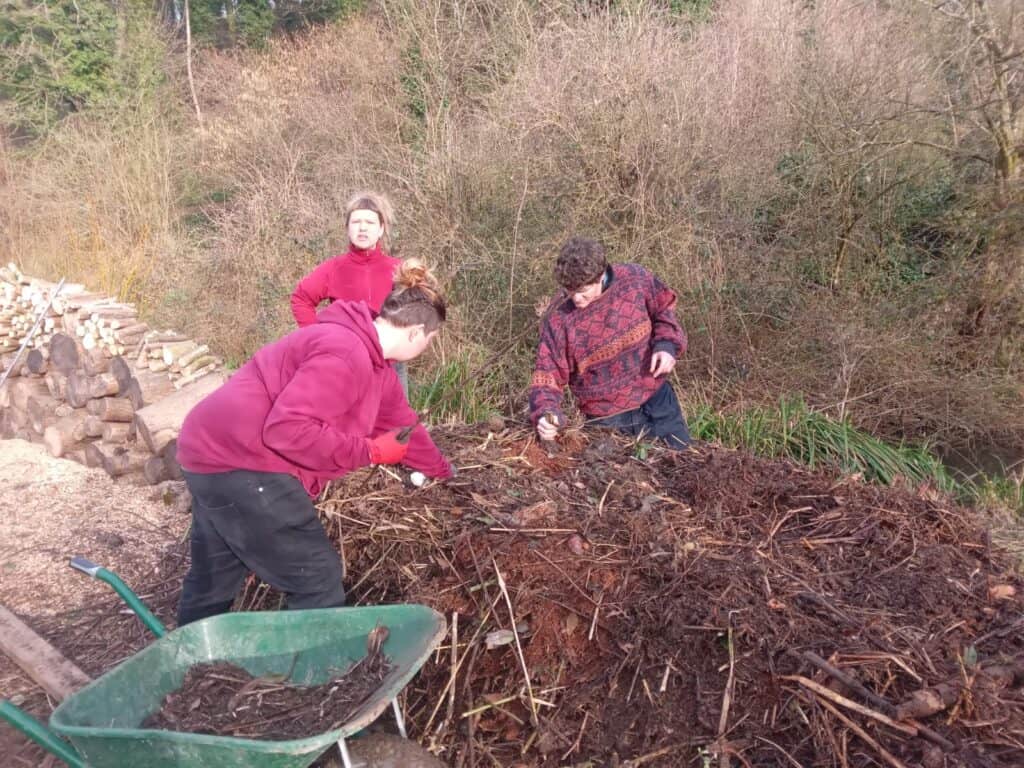A compost pile needs to be a good size, at least 1 meter in height and length to generate enough warmth to break down the material well. It’s important that the compost pile is well moistened, but at the same time doesn’t too wet. In a climate such as the UK a breathable compost, the cover is ideal, to help find this balance. You may want to find an area that is shaded by tree leaves in the summertime, to avoid excess evaporation, here the breathable compost cover comes in handy again.
The location of the compost pile is very important. Traditionally, a compost will is hidden away at the end of the garden, far from anyone’s gaze. But in the spirit of biodynamics, we understand the compost to be the metabolic organ of the garden, which means it has its place in the centre of the garden. If compost piles are well cared for, and balanced then they look beautiful and do not make a terrible smell. The compost pile provides all of our fertility from waste, it’s a miracle that our culture needs to appreciate and bring to the forefront of our awareness.

The pile needs to make contact with the soil underneath to allow insects, fungi, and microorganisms to easily pass through, and help with the breakdown processes.
Where I work, we have two different styles of compost. One is made of food scraps, vegetation, fish guts, and woodchips. This creates a rich compost that we add to our market garden. It takes between 4-6 months for it to be usable.
Next, we have a compost system for weeds, cuttings, and vegetation. This compost takes between 1-2 years to be ready to use. The weeds will eventually break down in the warmth of the compost pile, and any seeds will break down. We give two years for this to take place. When the compost is ready, we will use it mainly for flower beds.
Brambles, Couch Grass, or any other invasive weeds are taken to be burned. We then apply the ashes to the compost. You could also ferment the invasive weeds, and make liquid manure before adding them to the compost.
Building The Compost Pile
Cow manure is one of the best materials to use in a compost pile. For me, cow manure has been harder to obtain, as the grazing plan for the cows, has changed. They spend less time in the barn building up manure. Instead, we rely mainly on food waste from two kitchens that produce between 40 – 60 litres of food waste five days a week, as they cater to a large number of people.
To manage this, we use a Ridan composter, that partly breaks down the material within a week. Food waste is put in and mixed with 1/4 the volume of compressed wood shaving or 2/3 the volume of wood chops from our land. Fish guts and bones from our biodynamic trout farm are also added once a week on harvesting day, this provides us with an animal element and a source of calcium, which is important especially when we are not receiving as much cow manure then previously.
The Ridan composter has a corkscrew mechanism inside, as you turn the new material, the old material exits on the opposite side, in a partially broken down state, after just 7 days. This is then added to a maturation box, where it is kept for another few months, before being added to a standard compost pile. I also apply some garden lime, to help neutralize any outpouring acidity.
To make good compost you have to balance the carbon and nitrogen levels.
| Carbon | Nitrogen |
|---|---|
| Dead Leaves | Animal Manures |
| Straw | Food Scraps |
| Woodchips | Fresh Weeds |
| Cut Branches | Grass Cuttings |
The Compost Preparations
Rudolf Steiner indicates the use of six biodynamic preparations, that work in a symphony to encourage a balanced breakdown throughout the pile and provide the pile with forces that impact the health of the soil and plants. The preparations of Yarrow, Chamomile, Dandelion, Nettle, and Oak Bark are inserted in five holes spaced across the pile. The spacing is important, so each preparation can establish itself before competing with the other preparations in the whole compost.
The compost preparations work in the compost, and also on the soil where the compost is spread.


Recent Posts
Biodynamic Ecology and the Brain: How the Farm Organism Aids Neurodivergent Self-Regulation
The Farm as a Living Organism The Farm Organism is a fundamental concept within the biodynamic agricultural method, which began in 1924 with a series of eight lectures on agriculture by...
In February 2024, I attended the 100th biodynamic conference at the Goetheanum in Dornach, Switzerland. Here, biodynamic farmers, educators, winemakers, community leaders, and growers met to share...
